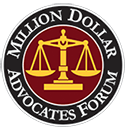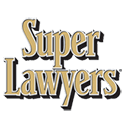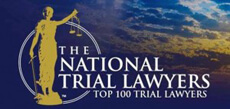5.33A VERBAL THRESHOLD (Type 6, 7, 8 Or 9 Injuries)
A. Introduction
In order to recover damages in this case, plaintiff must prove by a preponderance of the evidence that he/she sustained injuries which fit into one or more of the following categories:
B. Permanent Loss of Use of a Body Organ, Member, Function or System (Type 6)
The first category is permanent loss of use of a body organ, member, function or system. In this case, the plaintiff alleges permanent loss of use of [body organ, member, function or system]. In order to prevail, the plaintiff must prove all three of the following elements:
1. That he/she sustained a loss of use of his/her [body organ, member, function or system].
In order to find that plaintiff sustained a loss of use of his [body organ, member, function or system], you must find either that the [body organ, member, function or system] no longer operates at all, or that it operates only in some limited way. It is not necessary that there be a total loss of use of [body organ, member, function or system].
Plaintiff must show proof of the injury by objective, credible evidence; that is, the proofs must be both objective and credible. Objective means that the evidence must be verified by physical examination and observation and cannot be based solely on plaintiff’s complaints. Credible means that the evidence is believable.
2. That the loss of use of [body organ, member, function or system] is permanent.
3. That the injury has had a serious impact on the plaintiff’s life. This means that the plaintiff must prove that the injury has seriously affected one or more activities which were a significant and important component of the plaintiff’s way of life.
C. Permanent Consequential Limitation of Use of a Body Organ or Member (Type 7)
The second category is permanent consequential limitation of use of a body organ or member. In this case, the plaintiff alleges permanent consequential limitation of use of [body organ or member].
In order to prevail, the plaintiff must prove all three of the following elements:
1. That he/she sustained a consequential limitation of use of [body organ or member].
The phrase “consequential limitation of use of a body organ or member” means that the limitation of use of a body organ or member must be significant.
In order to fall into this category, the limitation of use cannot be merely mild or minor. Rather, it must be important, significant, and of some consequence.
It is not necessary that there be a total loss of use of [body organ or member]. You must find that the [body organ or member] has been limited or restricted in its operation in some significant way. A minor, mild or slight limitation is not consequential. Thus, in order for you to find that any of the plaintiff’s injuries fall within this category, the plaintiff must prove that he/she has a limitation of use of his [body organ or member] that is of consequence and important in nature.
Plaintiff must show proof of the alleged injury by objective, credible evidence. That is, the proofs must be both objective and credible. Objective means that the evidence must be verified by physical examination and observation and cannot be based solely upon plaintiff’s complaints. Credible means that the evidence is believable.
2. That the limitation of use of [body organ or member] is permanent.
3. That the injury has had a serious impact on the plaintiff’s life. This means that the plaintiff must prove that the injury has seriously affected one or more activities which were a significant and important component of the plaintiff’s way of life.
D. Significant Limitation of Use of a Body Function or System (Type 8)
The third category is significant limitation of use of a body function or system. In this case, the plaintiff alleges a significant limitation of use of [body function or system].
In order to prevail, the plaintiff must prove:
1. That he/she sustained a significant limitation of use of his [body function or system].
The phrase “significant limitation of use of a body function or system” means that the use of a body function or system is limited in a serious manner.
It is not necessary that there be a total loss of use of (body function or system). You must find that there is a limitation of use of the [body function or system] which is significant, important or meaningful. A minor, mild or slight limitation of use is not sufficient. For this category, the limitation of use of [body function or system] need not be permanent.
Plaintiff must show proof of the alleged injury by objective, credible evidence. That is, the proofs must be both objective and credible. Objective means that the evidence must be verified by physical examination and observation and cannot be based solely upon plaintiff’s complaints. Credible means that the evidence is believable.
2. That the injury has had a serious impact on the plaintiff’s life. This means that the plaintiff must prove that the injury has seriously affected one or more activities which were a significant and important component of the plaintiff’s way of life.
E. Verbal Threshold (Type 9 Injuries) N.J.S.A.39:6A-8a
In order to recover damages in this case, plaintiff must prove by a preponderance (greater weight) of the evidence that the injury he/she sustained is:
A medically determined injury or impairment of a non-permanent nature which prevents the injured person from performing substantially all of the material acts which constitute that person’s usual and customary daily activities for not less than 90 days during the 180 days immediately following the occurrence of the injury or impairment.
In order to prevail, the plaintiff must prove all three of the following elements:
1. Plaintiff must satisfy you of the injury or impairment [describe] by objective, credible medical evidence; that is, the proofs must be both objective and credible. Objective means that the evidence must be verified by physical examination and/or testing and cannot be based solely on plaintiff’s complaints. Credible means that the evidence is believable.
2. That the injury or impairment prevented the plaintiff from performing substantially all of the material acts which made up the plaintiff’s usual and customary daily activities.
In determining plaintiff’s usual and customary daily activities you are to consider all of the activities which were a significant part of the plaintiff’s usual daily routine. While you may find the plaintiff’s employment to be a usual activity, you must give equal attention to the details of the plaintiff’s other usual and customary activities such as marital, household, social, athletic or recreational activities. You are to consider all of the plaintiff’s usual activities, not just a primary one.
3. Once you have determined what material acts constituted the plaintiff’s usual and customary daily activities before the injury or impairment, you must decide whether the plaintiff presented sufficient objective evidence showing that his/her injury or impairment prevented him/her from performing substantially all of these activities during at least 90 of the 180 days following the occurrence of the injury. The impact of the injury or impairment on these activities must have been to a great extent rather than a slight curtailment.
If you find that the plaintiff has established these three elements, then your verdict must be in favor of the plaintiff on this verbal threshold issue and you will answer the question “yes.”
If you find that plaintiff has not proved each of these elements then you must answer the question “no.”



